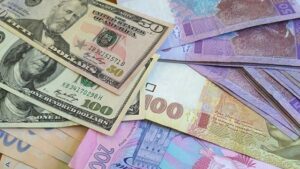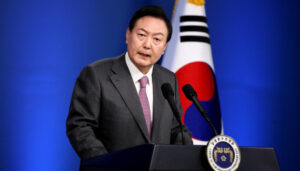
The Asian Development Bank will provide $250 million in policy interventions to support the Government of Uzbekistan’s efforts to strengthen the institutional framework for climate transition, enhance integration and alignment of climate change adaptation priorities, and accelerate climate change mitigation measures.
The Climate Transition Acceleration Program will support the Government of Uzbekistan in three reform areas: strengthening institutions and public financial management; enhancing climate resilience in water and land management, agriculture, and social protection systems; and accelerating the transition to a low-carbon economy in sectors such as transport and energy.
This program, which is ADB’s first programmatic response to climate change in Central Asia, is in line with the updated Nationally Determined Contribution (NDC), the 2030 Strategic Framework for the Transition to a Green Economy, and ADB’s Country Partnership Strategy for Uzbekistan 2024-2028.
“The program prioritizes decarbonizing the economy and building resilience to natural disasters and climate change, while supporting vulnerable populations,” said Evgeny Zhukov, ADB’s Director General for Central and West Asia. “Uzbekistan is among the world’s most energy-intensive economies, so the program will support the government’s efforts to reduce greenhouse gas emissions per unit of GDP by 35 percent by 2030. The reduction will be achieved through the development of renewable energy sources and energy efficiency.”

European Commission president says average spending in Europe is 1.9% of GDP, while Russia’s is 9%.
The head of the EU executive, Ursula von der Leyen, has called for more defence spending in Europe over the next five years, as her top team was voted in by a wafer-thin majority of MEPs.
The European parliament’s endorsement of the new EU executive by the narrowest-ever margin, clears the way for von der Leyen and her chosen 26 European commissioners to start a five-year term on Sunday.
The EU faces acute challenges, including the war in Ukraine, the return of Donald Trump and the climate crisis, all against a backdrop of deepening fears of economic decline as von der Leyen starts her second term.
She told MEPs ahead of the vote there was “something wrong in [the] equation” where Russia was spending up to 9% of GDP on defence while the European average was 1.9%.
“War is raging at Europe’s borders and we must be ready for what lies ahead, working hand in hand with Nato,” she told MEPs. “Our defence spending must increase,” she said, calling for efforts to boost the European defence industry and common defence projects.
Von der Leyen said Europe faced difficult choices that required “massive investments in our security and our prosperity”.
MEPs voted by 370 to 282 to confirm the officials proposed by Ursula von der Leyen in September – the most right-leaning in the EU’s modern history – after a political deal between leaders of the centre-right European People’s party, the Socialists and the centrist liberals. It was the narrowest margin since the European parliament gained the power to approve the EU executive in the 1990s, and split political groups across the spectrum of the European parliament.
The vote was equal to 51.3% of the total number of 720 MEPS, or 53.7% of those present in the chamber.
Fifteen of the 27 new commissioners, including von der Leyen herself, are members of or allied to the centre-right European People’s party (EPP), with two more commissioners on the nationalist and far-right side. The outgoing commission had 10 EPP commissioners and one allied to an anti-EU nationalist party.
The vote draws a line under a ferocious row that had threatened the prospects of Spain’s deputy prime minister, Teresa Ribera, and Italy’s Europe minister, Raffaele Fitto, who will both now become European commission vice-presidents.
Ribera’s appointment was held up by a bitter partisan dispute over the deadly floods in Valencia. Spain’s centre-right Popular party voted against the commission, while Socialists and other left-leaning MEPs opposed Fitto, a former Christian Democrat, because he is now a member of Giorgia Meloni’s Brothers of Italy party.
The nationalist European Conservatives and Reformists, the fourth largest group, with 78 MEPs was split, with Meloni’s Brothers of Italy and Belgium’s Flemish separatist party voting for the commission, while Poland’s Law and Justice party voted against.
The Green group, which has 53 MEPs, was also divided, but its co-leaders chose to support von der Leyen’s commission. Their support was cemented on Monday when von der Leyen said the Greens were “part of the pro-European majority in the European parliament”, while announcing the appointment of the former Green MEP Philippe Lamberts to an advisory role on the EU’s climate targets.
The appointment of Lamberts, an outspoken former IBM executive, was already known and Green leaders insisted it was von der Leyen’s extension of an open hand to their group, rather than the appointment, that swayed them. The Green co-leader Bas Eickhout said it was “a lie” that Lamberts’ appointment had determined their decision, saying the important factor had von der Leyen’s language, which made it “very clear where she stands politically”.
Von der Leyen told MEPs on Wednesday that she would always “work from the centre” and vowed to “stay the course” on the European green deal, the EU’s flagship policy to tackle the climate crisis. But her speech put more emphasis on strengthening Europe’s economy and defence, with no mention of the climate or the escalating crisis European nature is facing. During her last mandate, the EU scrapped plans to curb pesticides after large protests by farmer and scaled back plans to cut pollution and protect habitats.
In response to a report published earlier this month by the former Italian prime minister Mario Draghi, which starkly warned that Europe risked an “slow and agonising decline”, von der Leyen pledged “a competitiveness compass” that aimed to close the innovation gap with the US and China; boost Europe’s decarbonisation and competitiveness; and increase security, including ensuring supply of critical raw materials.
Amid growing alarm about the European car industry, von der Leyen announced she would lead “a strategic dialogue” on the future of Europe’s carmakers. Many in the EPP and critics on the right have denounced EU targets to phase out the internal combustion engine by 2035, as European carmakers fall behind Chinese competitors in the race to develop electric vehicles.
All 26 commissioners underwent three-hour hearings at the European parliament in November, but for the first time in more than 20 years, none were rejected over their competence, or their European commitment.
The lengthy process underscored how the hearings have morphed into a political battle in an increasingly fragmented, right-leaning parliament, rather than a true assessment of the officials.
Roberta Metsola, the president of the European parliament, said Wednesday’s vote for the commission showed “the centre held”. The parliament, she said, would require “different types of majorities for different types of legislation, but without the centre, you cannot work”.

The National Bank of Ukraine (NBU), after depreciating the official hryvnia exchange rate by 12 kopecks on Monday, lowered it by another 7 kopecks on Tuesday to 41.5035 UAH/$1, according to the regulator’s website.
“Ukraine’s currency market remains under pressure from psychological factors, although the fundamental macroeconomic indicators do not yet give grounds for strong devaluation pressure and abrupt changes in exchange rates,” KIT Group analysts state in their currency market forecast.
At the same time, they expect a smooth devaluation of the hryvnia in the future. In particular, according to KIT Group’s forecast, the official exchange rate of the national currency to the US dollar will remain in the range of 41-42 UAH/$1 by the end of November, provided that the current state of the macroeconomy and security situation remains unchanged.
By the end of this year, analysts predict the hryvnia will weaken to 43 UAH/$1, which, according to them, may be due to seasonal demand for foreign currency.
The National Bank set the reference exchange rate at 12:00 p.m. today at 41.4815 UAH/$1, compared to 41.4087 UAH/$1 a day earlier.
The US dollar on the cash market on Tuesday rose by 8 kopecks, both when buying and selling, to 41.68 UAH/$1 and 41.75 UAH/$1, respectively.
Since the beginning of 2024, the dollar has risen by 9.2%, or UAH 3.50, at the official exchange rate, and by 13.5%, or UAH 4.93, since the National Bank switched to managed flexibility on October 3, 2023.
The average annual rate of 45 UAH/$1 included in the state budget for 2025 is considered realistic by KIT Group analysts, who note that it implies exchange rate fluctuations in the range of 44-46 UAH/$1.
Ukraine’s international reserves in October, according to preliminary estimates of the NBU, decreased by 6%, or $2.32 billion, to $36 billion 578 million, while net international reserves (NIR) decreased by $3.11 billion, or 12.2%, to $22 billion 437 million.

South Koreans remain widely opposed to directly supplying arms to Ukraine, recent polls show, despite renewed international requests from Kyiv and allied capitals after North Korean troops were reported to be helping Russia.
Ukraine has asked Seoul for a range of weapons and Seoul has said it could consider such aid, depending on future steps by Russia and North Korea.
A Ukrainian delegation led by Defence Minister Rustem Umerov met South Korean President Yoon Suk Yeol on Wednesday, Yoon’s office said, amid media reports that the visit aimed to seek arms support.
“No to the South Korean government planning arms supply to Ukraine,” read a banner held by a small group of protesters gathered outside Yoon’s office in the capital.
Both sides agreed to keep up sharing of information on North Korea’s dispatch of troops to Russia as well as the exchange of technology and weapons between the two, Yoon’s office said in a statement.
The delegation also met Seoul’s national security advisor Shin Won-sik and defence minister Kim Yong-hyun and discussed cooperation between Seoul and Kyiv.
Ukraine planned to send Seoul a detailed request for arms support including artillery and an air defence system, President Volodymyr Zelenskiy said in an October interview with South Korean broadcaster KBS.
A Western diplomat told Reuters that discussions behind the scenes focused on air defence systems designed to shoot down aircraft and missiles, but this month’s U.S. presidential election win by Donald Trump cast uncertainty over the talks.
Yoon, already battling with record low approval ratings over domestic scandals, faces wide opposition from the South Korean public to the idea of arming Ukraine, surveys have shown.
Most South Koreans viewed growing military ties between Pyongyang and Moscow as a threat, a Gallup Korea poll showed in October, but 82% opposed sending military aid, including arms.
“To the South Korean government, there will be fewer benefits for continuing to support (military aid) when there is little domestic support and the relationship with the next U.S government could deteriorate,” said Yang Uk, an analyst at the Asan Institute for Policy Studies.
Yoon’s low approval ratings, along with little public backing for supply of weapons, are burdens sapping his mandate on foreign policy, he added.
The public, largely not sensitive to the seriousness of the war in Ukraine, is likely to focus on the downside in the event of the South’s direct involvement, Yang said.
Unlike neighbouring Japan, which has also avoided directly arming Kyiv, South Korea is one of the world’s largest weapons exporters and has inked large, lucrative defence deals with Ukraine’s neighbours.
South Korea has provided demining vehicles, body armour, and other non-lethal aid for Ukraine and has not ruled out supply of weapons to Kyiv, especially after Seoul and Washington reported the dispatch of thousands of North Korean troops to Russia.
At home, the main opposition Democratic Party (DP) has criticised the government for not ruling out provision of weapons aid and urged it to seek parliamentary approval for such decisions.
The DP has a majority in parliament after a landslide victory in an April election, but experts say the president can bypass the body to supply lethal weapons to another country.
In an interview with Russia’s TASS news agency, Russian Deputy Foreign Minister Andrey Rudenko said ties between Seoul and Moscow would be “completely destroyed” if South Korea supplied arms to Ukraine.
Russia should first ask itself what it provides to North Korea in exchange for Pyongyang’s dispatch of troops and how it is threatening the security of South Korea, a senior South Korean foreign ministry official told a background briefing on Wednesday, when asked about the comments.
Seoul’s response depends on the actions of Russia and North Korea, the official added, speaking on condition of anonymity.
https://www.reuters.com/world/south-koreans-remain-opposed-sending-arms-ukraine-2024-11-27/

China plans to increase the penetration rate of 5G communication network among individual users to more than 85% by the end of 2027, according to an action plan developed by the Ministry of Industry and Informatization of China in cooperation with 11 other agencies. In three years, there will be 38 5G base stations for every 10 thousand people. At the same time, 5G will account for 75% of mobile Internet traffic, and the number of “Internet of Things” terminals connected to 5G will exceed 100 million.
The 5G penetration rate in large and medium-sized industrial companies will reach 45% by the end of 2027, according to a document cited by Xinhua.
The ministries’ plan is aimed, in particular, at actively promoting the large-scale development of 5G applications, popularizing and applying new generation information technologies.
According to the Ministry of Industry and Informatization, as of the end of September, the number of 5G base stations in the country amounted to about 4.09 million units, and the number of 5G mobile subscribers was 981 million. The 5G penetration rate among individual users has almost reached 70%, with the total population of the country at around 1.4 billion people.

On November 26, the Central Election Commission announced a tender for voluntary insurance of motor vehicles (CASCO) and compulsory motor third party liability insurance (MTPL), according to the Prozorro e-procurement system.
The total expected cost of the purchase of services is UAH 439.2 thousand.
The last day for receipt of bids is December 4.
The winner of a similar tender a year earlier on hull insurance was IC “Ultra Alliance”.